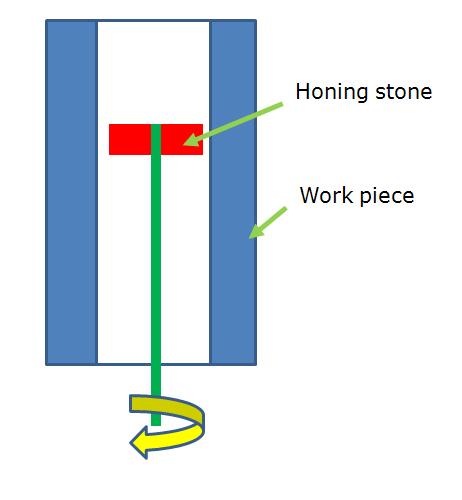The honing process is carried out by mechanically rubbing the honing stone (cutting tool here) against the work piece surface (normally internal) along the controlled path. Honing can produce a surface roughness level up to 0.1 micro meters.

Level of surface finish achieved: 1.6-0.025 micro meters
Advantages:
– Variety of materials can be chosen
– Good surface finish
Disadvantages:
– Equipment cost is quite high.
– Tool wear is quite high.
Ideal applications: Ideal for finishing the internal surfaces of I.C engine cylinders, hydraulic cylinders and other cylinders where retention of lubricants film over the surface is important functionally.
Hi, I am Shibashis, a blogger by passion and an engineer by profession. I have written most of the articles for mechGuru.com. For more than a decades i am closely associated with the engineering design/manufacturing simulation technologies. I am a self taught code hobbyist, presently in love with Python (Open CV / ML / Data Science /AWS -3000+ lines, 400+ hrs. )
